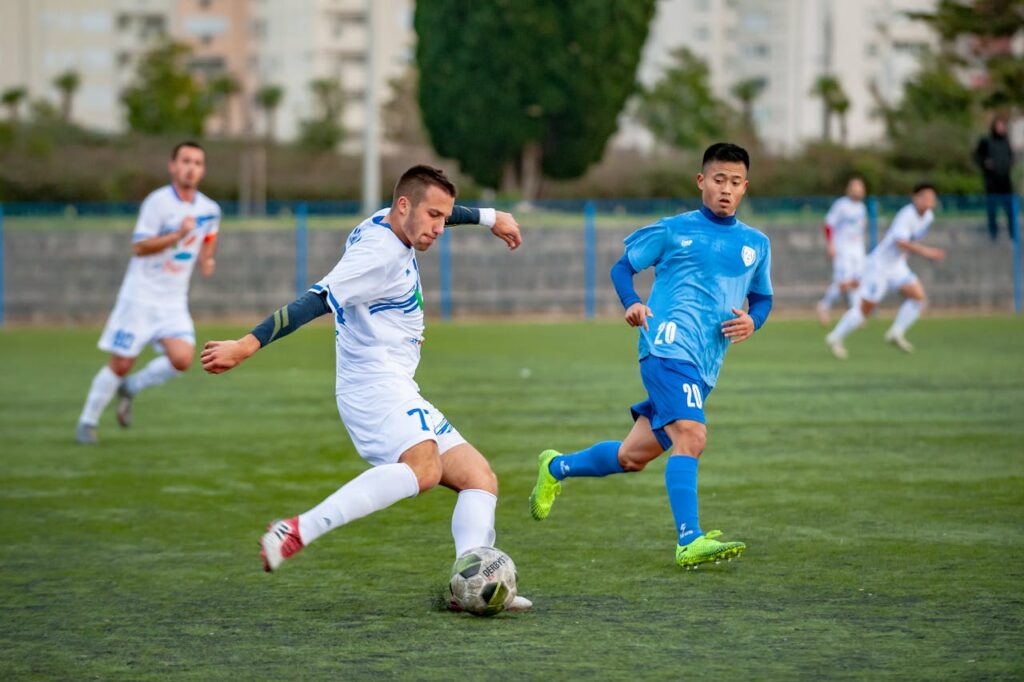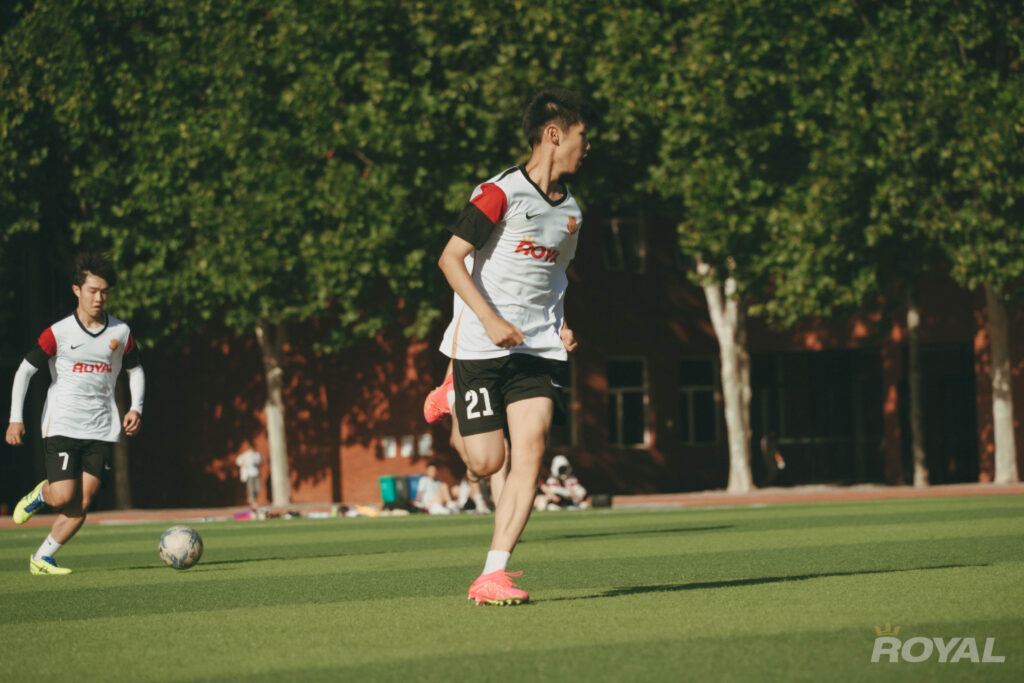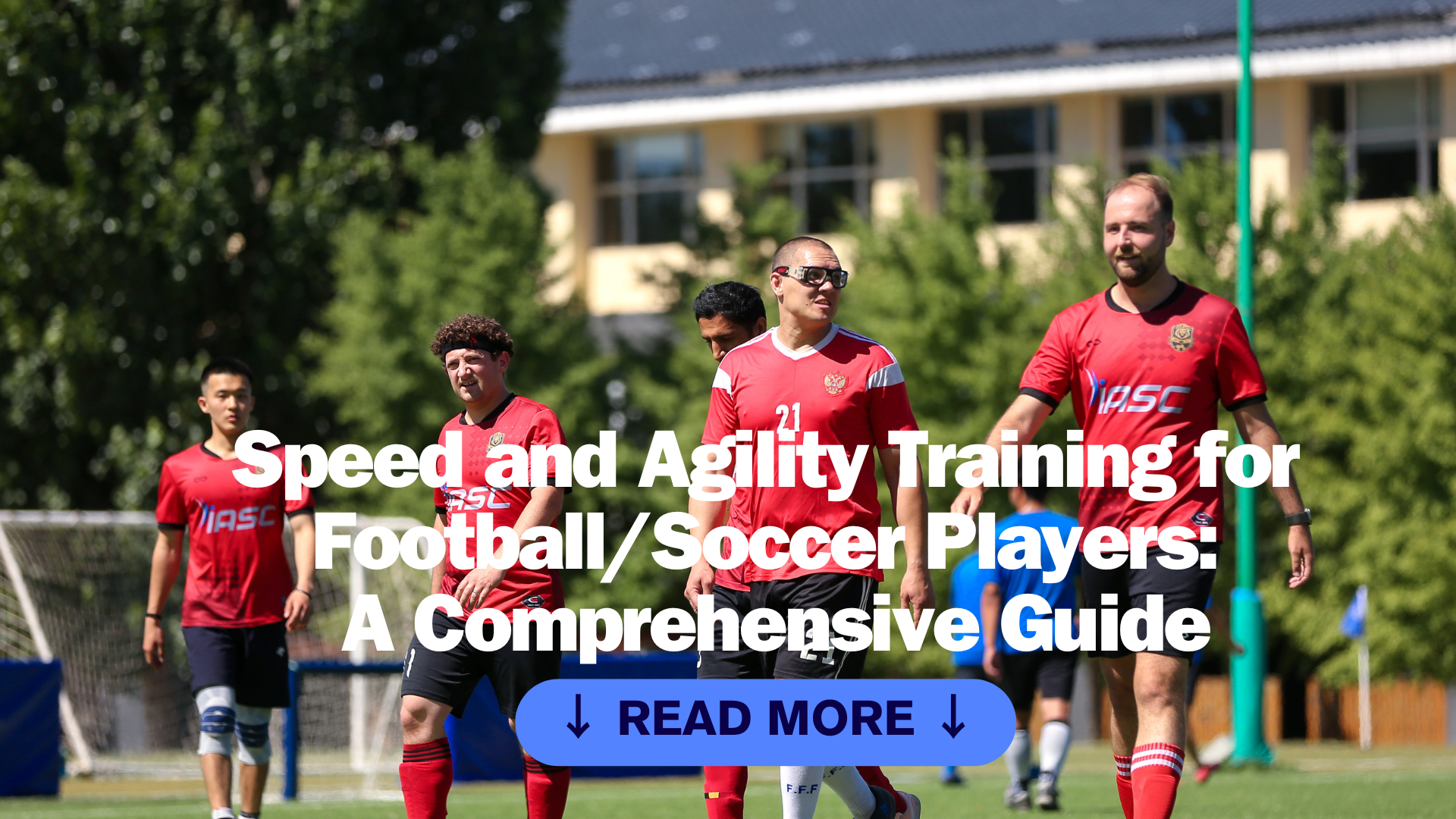Speed and agility are two of the most critical components in football (soccer), contributing directly to a player’s ability to excel on the pitch. These elements enable players to beat opponents, chase down the ball, and maintain rapid footwork in fast-paced game situations. In this article, we will dive into the importance of speed and agility training, discuss effective drills, and offer guidance on how football players can optimize their physical performance through targeted training.
What is Sports Speed and Agility?
Various physical and neuromuscular factors shape speed and agility in sports. To develop these skills, strength and conditioning coaches explore different training methods that impact athletes’ performance in competition. Both speed and agility are context-specific, depending on the situation in a match, and require a combination of physical, sensory, and cognitive abilities. Tactical awareness, decision-making, and game sense are key to effectively expressing these abilities. The demands of speed and agility also vary depending on the athlete’s role and the situation, such as attacking versus defending in a game.
Can Speed and Agility Be Taught?
While genetics play a role in speed and agility, recent research shows these abilities are trainable. Initially thought to be “natural talents,” evidence now supports that both change of direction and reactive agility can improve through targeted training. Studies have shown that instruction and movement skill practice enhance agility mechanics, reduce injury risk, and improve performance. Even perceptual and decision-making aspects of agility can be developed, as demonstrated by training that improves reaction time. Although some coaches still believe that agility is innate, growing evidence suggests that speed and agility can be cultivated through proper training.

The Importance of Speed and Agility in Football
Football is a game of constant movement, where players must sprint short distances, change direction rapidly, and accelerate or decelerate quickly. The following aspects of the game benefit directly from improved speed and agility:
- Acceleration and Deceleration: Players need to explode from a standing position to their maximum speed in seconds. Quick deceleration helps with changes in direction and controlling the ball.
- Reaction Time: Quick reactions enable players to outmaneuver opponents, intercept passes, and adjust to unexpected scenarios.
- Multi-Directional Movement: Players frequently need to sidestep, pivot, and move backward or laterally during both offensive and defensive phases.
- Endurance and Fatigue Resistance: Players with better speed endurance are more capable of maintaining their pace and sharpness as the game progresses.
Principles of Speed and Agility Training
Effective speed and agility training for football players should be structured with these core principles in mind:
- Explosive Power: Speed comes from a combination of strength and power. Athletes must develop lower-body power through strength training, plyometrics, and sprints.
- Technical Movement Efficiency: Players must refine their movement techniques to optimize how their bodies move. Proper running form, footwork drills, and posture alignment reduce energy waste.
- Sports-Specific Movement Patterns: Training should mimic the types of movements players encounter in football, like lateral shuffles, backpedaling, and curved running paths.
- Agility and Quick Decision-Making: Agility drills should incorporate cognitive elements such as reacting to cues, making them sports-specific and game-relevant.
Key Drills for Speed and Agility
1. Sprint Drills
Sprints are the foundation of speed training in football. Incorporate short sprints of 10 to 30 meters to focus on acceleration and top speed.
- Acceleration Sprints: Start from a standing or crouched position and sprint over a short distance (20-30 meters). Focus on driving the knees high and propelling off the ground with power.
- Flying Sprints: Begin with a slow jog and accelerate to maximum speed for the last 20-30 meters. This drill enhances top-end speed by training players to reach maximum velocity.
2. Agility Ladder Drills
Agility ladders are essential for developing quick footwork, balance, and coordination. These drills emphasize multi-directional movement and can be used for both warm-up and skill development.
- In-and-Out Drill: Start at the bottom of the ladder and step both feet in and out of each square as quickly as possible.
- Lateral Ladder Drill: Move laterally down the ladder by stepping each foot in and out of each square while maintaining low hips and body control.
3. Cone Drills for Agility and Change of Direction
Cone drills mimic the rapid changes of direction in football, helping players react and move efficiently in unpredictable scenarios.
- T-Drill: Set up cones in a “T” shape. Sprint forward to the center cone, shuffle sideways to the left or right cone, then return to the center and sprint backward.
- Zig-Zag Drill: Set up five cones in a zig-zag pattern 5-10 meters apart. Sprint from one cone to the next, decelerating, cutting sharply, and accelerating between each cone.
4. Resistance Sprinting
Using resistance tools like parachutes or sleds increases the load on the player’s body, developing lower-body strength and explosive power.
- Sled Pushes: Attach a weighted sled and sprint over a distance of 20-30 meters. This helps build strength and explosive power in the legs and core.
- Parachute Runs: Perform sprints with a resistance parachute attached to the back. This forces athletes to push harder during the sprint phase, improving acceleration and speed endurance.
5. Plyometric Drills
Plyometric exercises train explosive strength, crucial for fast acceleration and changes in direction.
- Box Jumps: Jump from the ground onto a box, focusing on explosiveness and minimizing ground contact time.
- Depth Jumps: Step off a box and explode into a vertical jump upon landing. This trains fast-twitch muscle fibers for quick bursts of speed and power.

Integrating Speed and Agility into a Training Program
A comprehensive speed and agility program for football players should balance skill-specific training, strength work, and conditioning. Here’s a simple weekly structure:
- Day 1: Acceleration and short sprints (focus on explosive starts and driving power)
- Day 2: Agility ladder and cone drills (focus on lateral movement, quick feet, and reaction)
- Day 3: Acceleration and Long sprints
- Day 4: Agility ladder and cone drills
- Day 5: Rest and recovery
The Role of Strength Training in Speed and Agility
Speed and agility are not just about how quickly players can move their legs. Strength training plays a critical role in enhancing these attributes by improving muscle power and coordination.
- Whole Body Strength: Exercises Lower and upper body pushing and pulling exercises such as squats, lunges, and deadlifts build the foundation for explosive acceleration and deceleration.
- Core Strength: A strong core helps players maintain balance and stability during multi-directional movements and physical challenges on the pitch.
- Flexibility and Mobility: Regular stretching and mobility work improve a player’s range of motion, helping prevent injuries and allowing for smoother, more efficient movement.
Conclusion
Speed and agility training are integral parts of a football player’s development, influencing their ability to perform at the highest level. By focusing on explosive power, quick reactions, and technical efficiency, footballers can significantly enhance their performance on the field. A well-structured program that combines sprinting, agility drills, resistance training, and strength conditioning will allow players to gain the edge needed to compete at elite levels.
Ultimately, successful football players combine technical skill with superior physical conditioning, and speed and agility training provide the athletic foundation required to excel in this dynamic and fast-paced sport.
Auther: Abobakr Ravand
is an Entrepreneur, Sports Manager, Strength and Conditioning, and Personal Trainer Coach. He is a well-experienced manager & coach in Strength & Conditioning and Health & Fitness programs. Expert in conducting and designing strength and conditioning programs for high-level athletes and national teams. Coach educator for national and regional coaches. Lecturer at different international events. Published academic articles & books and presented at international conferences.







